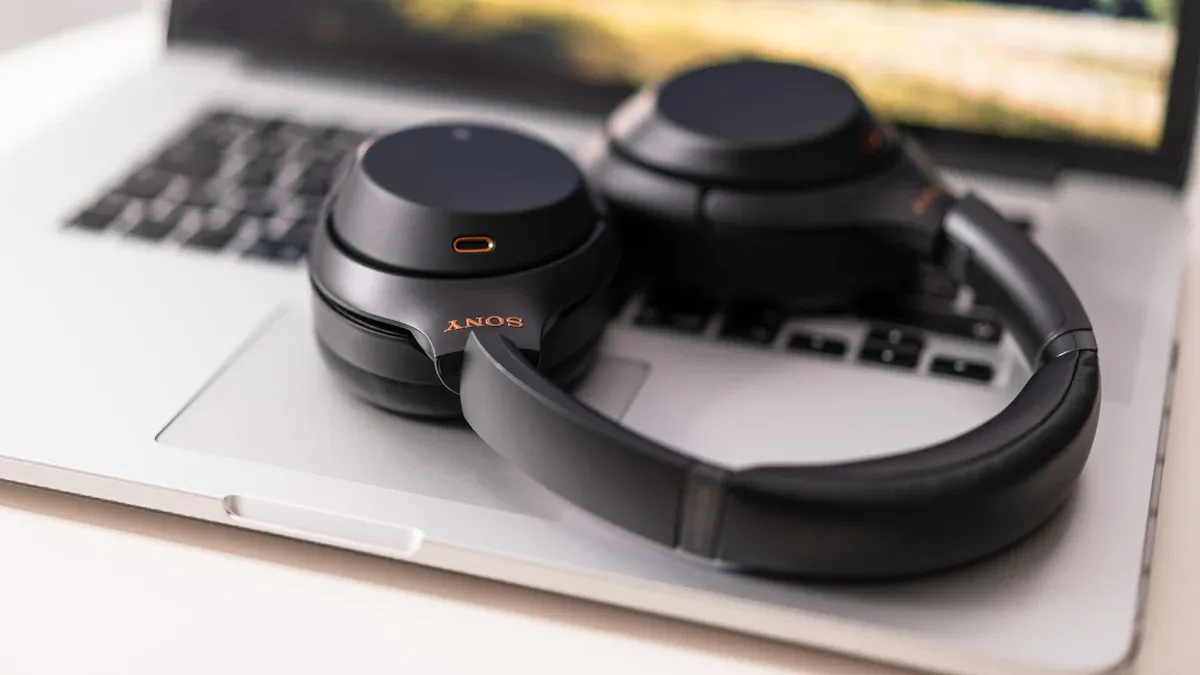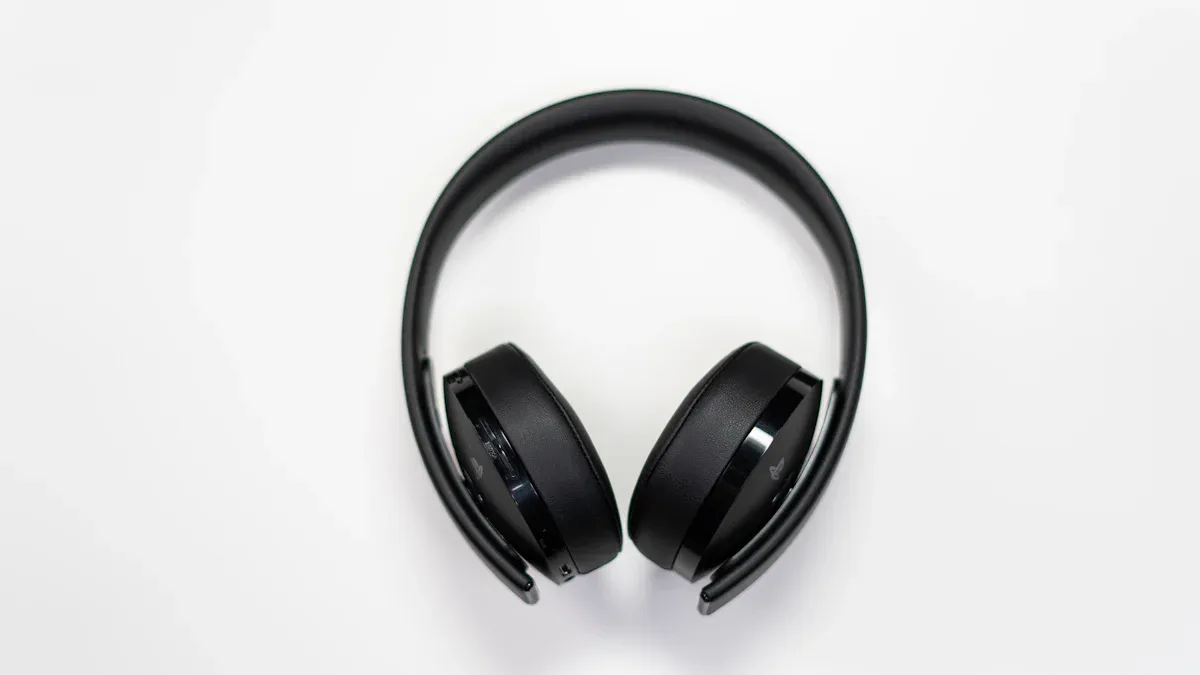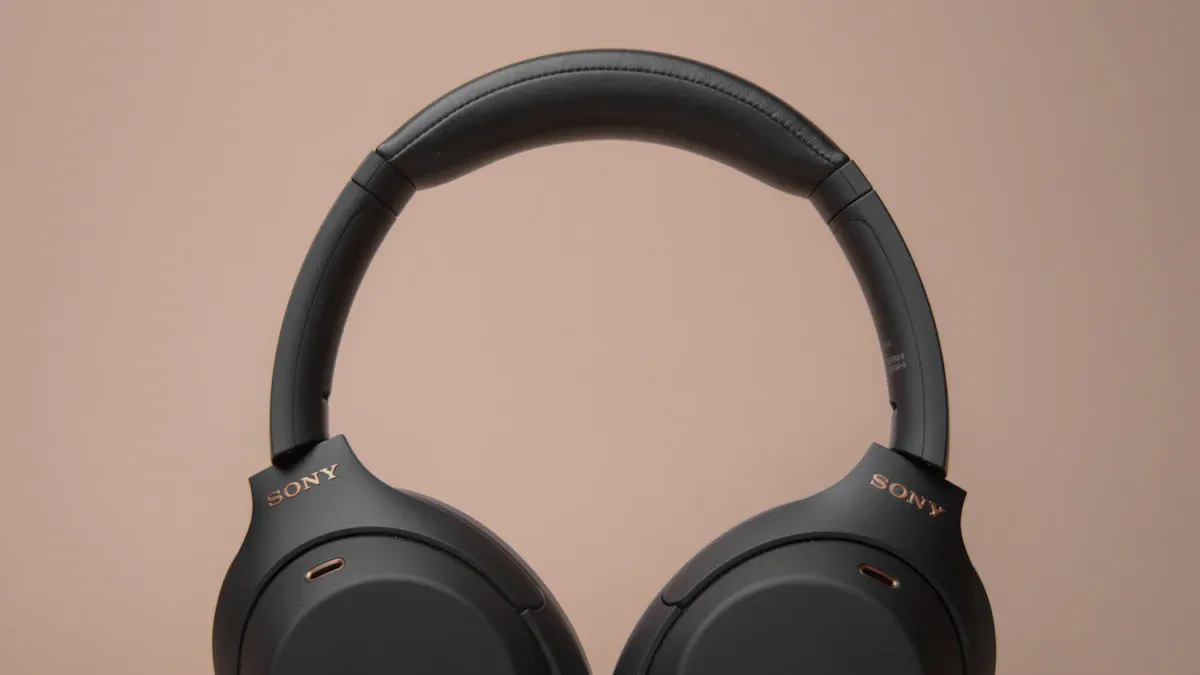
Noise-canceling headphones reduce unwanted sounds by using advanced technology. These devices use microphones to detect external noise and create sound waves that cancel it out. Whether you need a noise canceling handset for travel or a customized handset for work, this technology ensures clarity. Even an industrial telephone handset can benefit from noise cancellation.
Key Takeaways
- Noise-canceling headphones use special tech to block loud sounds. This makes listening better in noisy places.
- Active Noise Cancellation (ANC) works well for deep sounds. Passive Noise Cancellation (PNC) uses design to block sharp noises.
- When picking noise-canceling headphones, think about how you’ll use them. Also, check comfort, battery life, and cost to choose the best one.
The Science Behind Noise Cancellation

Active Noise Cancellation Explained
Active Noise Cancellation (ANC) uses advanced technology to block out unwanted sounds. It relies on tiny microphones placed inside or outside the ear cups of your headphones. These microphones pick up external noise, such as the hum of an airplane engine or chatter in a coffee shop. The system then generates sound waves that are the exact opposite of the detected noise. When these opposite waves meet the original sound waves, they cancel each other out. This process, called destructive interference, creates a quieter listening experience for you.
ANC works best for consistent, low-frequency sounds like engine noise. However, it may struggle with sudden, high-pitched noises. You can find this technology in many modern noise canceling handsets, making them ideal for travel or noisy environments.
Passive Noise Cancellation Explained
Passive Noise Cancellation (PNC) doesn’t use electronics. Instead, it relies on the physical design of the headphones to block out sound. Over-ear headphones with thick padding or in-ear models with snug-fitting ear tips create a seal around your ears. This seal reduces the amount of external noise that reaches your ears.
PNC works well for high-frequency sounds, such as conversations or keyboard clicks. While it doesn’t actively cancel noise, it provides a natural barrier that enhances your listening experience.
How Microphones and Sound Waves Work in ANC
Microphones play a crucial role in ANC technology. They detect external sounds and send this information to a processor inside the headphones. The processor analyzes the sound and creates an opposite sound wave. This wave cancels out the original noise before it reaches your ears.
The placement of microphones affects how well ANC works. Some headphones use external microphones to capture outside noise, while others use internal ones to monitor what you hear. High-quality noise canceling handsets often combine both types for better performance.
Types of Noise-Canceling Handsets

Over-Ear Noise-Canceling Handsets
Over-ear noise-canceling handsets are designed to fully cover your ears. These headphones use large ear cups with thick padding to create a seal around your ears. This design helps block out external sounds even before the active noise cancellation kicks in. You’ll find these handsets ideal for long listening sessions because they offer excellent comfort and sound quality. They are perfect for environments like airplanes or offices where you need to focus.
One downside is their size. Over-ear models are bulkier than other types, making them less portable. However, if you prioritize comfort and immersive sound, these handsets are a great choice.
In-Ear Noise-Canceling Handsets
In-ear noise-canceling handsets, also known as earbuds, fit snugly inside your ear canal. Their compact size makes them easy to carry, which is why they’re popular among commuters and travelers. These handsets often come with silicone or foam tips that create a tight seal, enhancing both passive and active noise cancellation.
While they are convenient, in-ear models may not provide the same level of noise isolation as over-ear designs. They also might feel uncomfortable during extended use. However, their portability and lightweight design make them a practical option for on-the-go use.
Hybrid Designs and Their Features
Hybrid noise-canceling handsets combine the best features of over-ear and in-ear models. These designs often include advanced noise cancellation technology and a comfortable fit. Some hybrid models feature detachable ear cups or interchangeable ear tips, allowing you to customize your experience.
These handsets are versatile and cater to various needs. Whether you’re working in a noisy office or relaxing at home, hybrid designs offer flexibility. They also tend to include premium features like adaptive noise cancellation and long battery life, making them a worthwhile investment.
Understanding ANC Technologies
Feedforward ANC
Feedforward ANC uses microphones placed on the outside of the headphones. These microphones detect external sounds before they reach your ears. The system processes these sounds and generates opposing sound waves to cancel them out. This method works well for consistent noises like engine hums or air conditioning. However, it may struggle with sounds that change quickly, such as sudden conversations or honks.
Feedforward ANC is common in many modern noise canceling handsets. It provides effective noise reduction in predictable environments, making it ideal for travel or office use.
Feedback ANC
Feedback ANC uses microphones located inside the ear cups or ear tips. These microphones monitor the sound that you hear, including both the external noise and the audio from your headphones. The system adjusts the noise cancellation in real time to ensure a balanced listening experience. This method works well for a wide range of frequencies but may not handle very loud noises as effectively.
You’ll find feedback ANC useful in situations where sound quality matters, such as listening to music or watching movies.
Hybrid ANC
Hybrid ANC combines feedforward and feedback technologies. It uses both external and internal microphones to detect and cancel noise. This dual approach improves noise cancellation across a broader range of frequencies. It also adapts better to sudden changes in your environment, such as moving from a quiet room to a noisy street.
Hybrid ANC is often found in premium noise canceling handsets. It offers superior performance and is suitable for various activities, from commuting to working in noisy spaces.
Adaptive ANC
Adaptive ANC takes noise cancellation to the next level. It adjusts automatically based on your surroundings and activities. For example, it might increase noise cancellation in a crowded train and reduce it in a quiet room. This technology uses advanced algorithms to analyze your environment and optimize the settings in real time.
Adaptive ANC is perfect for those who move between different environments throughout the day. It ensures you always get the best noise cancellation without needing to adjust anything manually.
Pros and Cons of Noise-Canceling Handsets
Benefits of Noise-Canceling Technology
Noise-canceling technology offers several advantages. It reduces background noise, allowing you to focus on your music, podcasts, or calls. This feature proves especially useful in noisy environments like airplanes, trains, or busy offices. By blocking distractions, it helps you concentrate better during work or study sessions.
Another benefit is improved audio clarity. With less external noise, you can hear details in your audio that might otherwise go unnoticed. This makes noise-canceling handsets ideal for audiophiles or anyone who values high-quality sound. Additionally, these devices can reduce ear strain since you don’t need to increase the volume to hear clearly.
Limitations and Drawbacks
Despite their advantages, noise-canceling handsets have some downsides. They often cost more than regular headphones due to the advanced technology involved. If you’re on a budget, this might be a concern.
Another drawback is their performance with sudden or irregular noises. While they excel at canceling consistent sounds like engine hums, they may struggle with unpredictable noises like loud conversations. Some users also report a slight pressure sensation in their ears when using active noise cancellation, which can feel uncomfortable over time.
Impact on Sound Quality and Battery Life
Noise-canceling handsets can affect sound quality. The active noise cancellation process sometimes alters the audio, making it sound less natural. This might not bother casual listeners, but audiophiles could notice the difference.
Battery life is another factor to consider. Active noise cancellation requires power, which means these devices need frequent charging. If you forget to charge them, the noise-canceling feature won’t work, and you’ll have to rely on passive noise isolation.
Tip: Look for a noise canceling handset with long battery life if you plan to use it for extended periods.
Choosing the Right Noise-Canceling Handset
Use Cases (Travel, Work, etc.)
When choosing a noise canceling handset, consider how you plan to use it. For frequent travelers, over-ear models with strong active noise cancellation work best. They block out engine noise and create a peaceful environment during flights or train rides. If you need headphones for work, look for models with a good microphone. This ensures clear communication during calls or virtual meetings. For casual use, lightweight in-ear options might suit you better. They are easy to carry and perfect for listening to music or podcasts on the go.
Battery Life and Charging Options
Battery life plays a crucial role in your decision. Over-ear models often provide longer battery life, lasting up to 30 hours on a single charge. In-ear options may offer less, but many come with charging cases for quick top-ups. Some handsets also support fast charging, giving you hours of use with just a few minutes of charging. If you plan to use your headphones for long periods, prioritize models with extended battery life.
Comfort and Fit
Comfort is essential, especially if you wear headphones for hours. Over-ear designs with padded ear cups feel soft and reduce pressure on your ears. In-ear models should fit snugly without causing discomfort. Many brands offer multiple ear tip sizes to help you find the perfect fit. Always try different options to see which one feels best for you.
Price and Value for Money
Noise-canceling handsets come in a wide price range. Premium models offer advanced features like adaptive noise cancellation and superior sound quality. Budget-friendly options may lack some features but still provide decent performance. Decide what features matter most to you and compare prices. A higher price doesn’t always mean better value, so choose a model that fits your needs and budget.
Noise-canceling handsets offer advanced technology, comfort, and versatility. You can choose from various designs and features to suit your lifestyle.
Tip: Think about your daily activities, budget, and preferences before buying. The right choice will enhance your listening experience and make your investment worthwhile.
Explore your options and make an informed decision!
FAQ
What is the difference between ANC and PNC?
ANC uses microphones and sound waves to cancel noise actively. PNC relies on the headphone’s physical design to block external sounds passively.
Do noise-canceling headphones work without music?
Yes, they do. You can activate the noise-canceling feature to reduce background noise even when you’re not playing music or audio.
Can noise-canceling headphones harm your ears?
No, they don’t harm your ears. In fact, they reduce ear strain by letting you listen at lower volumes in noisy environments.
Tip: Always keep the volume at a safe level to protect your hearing.


